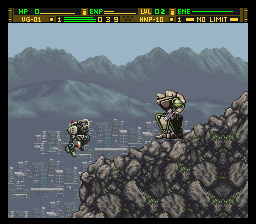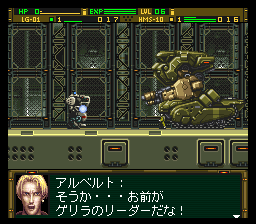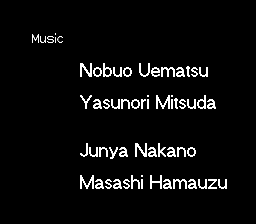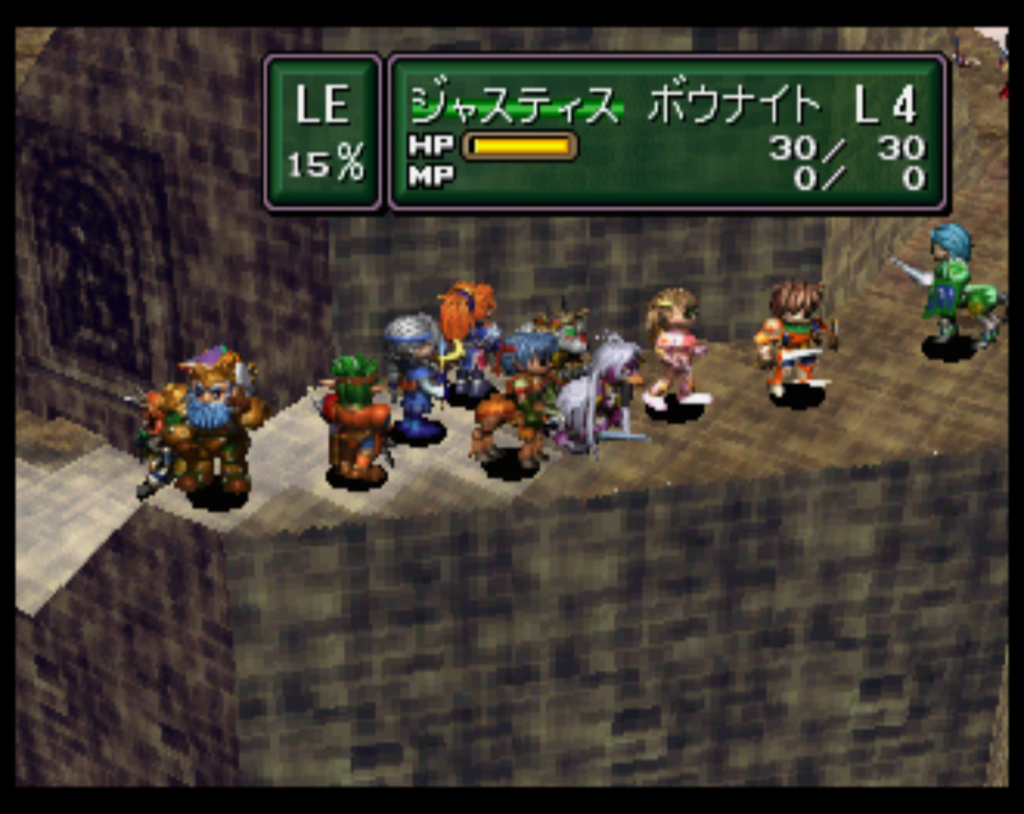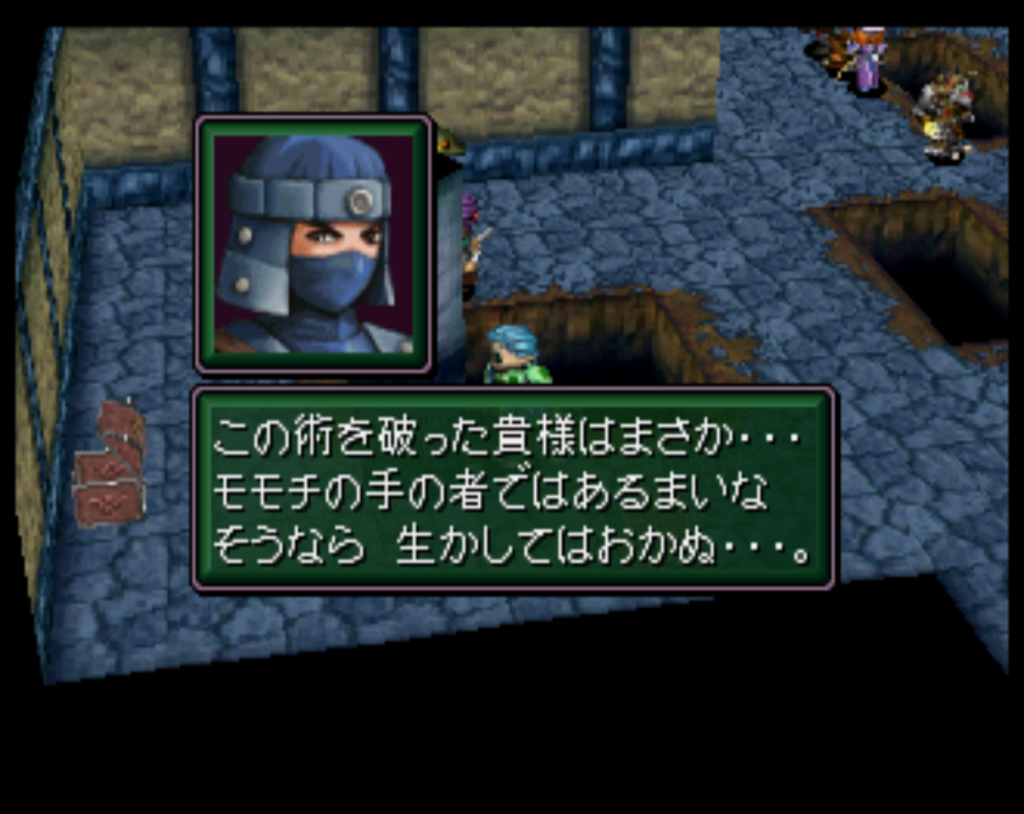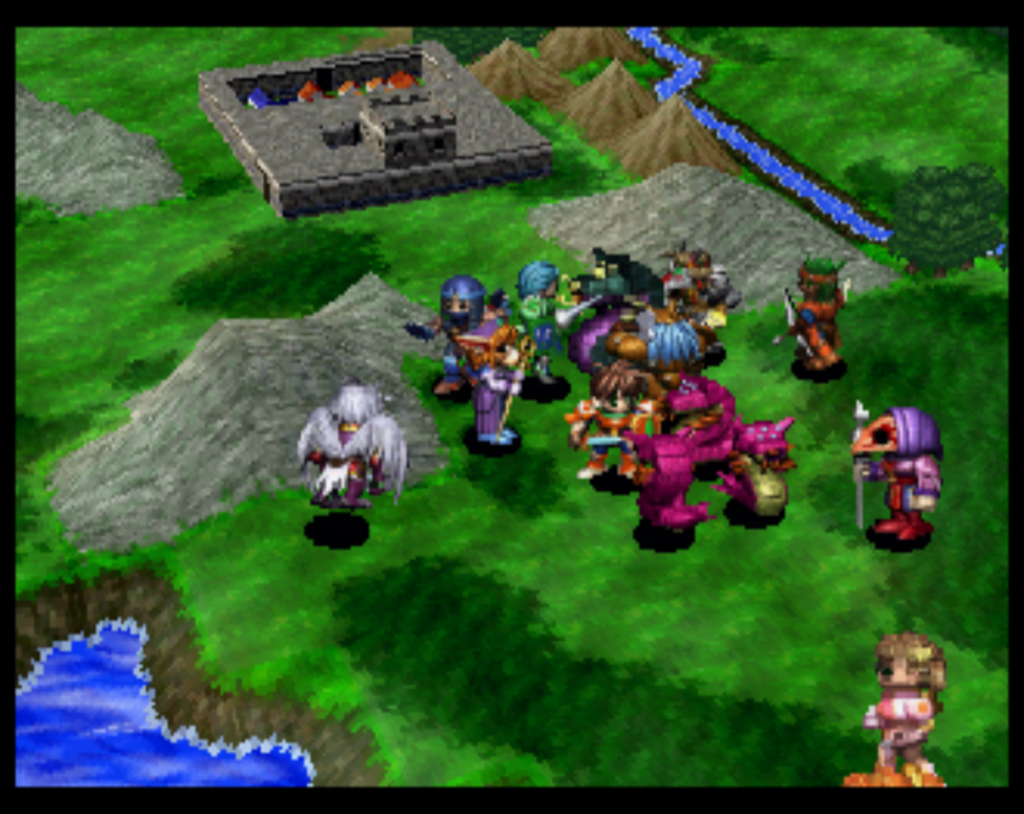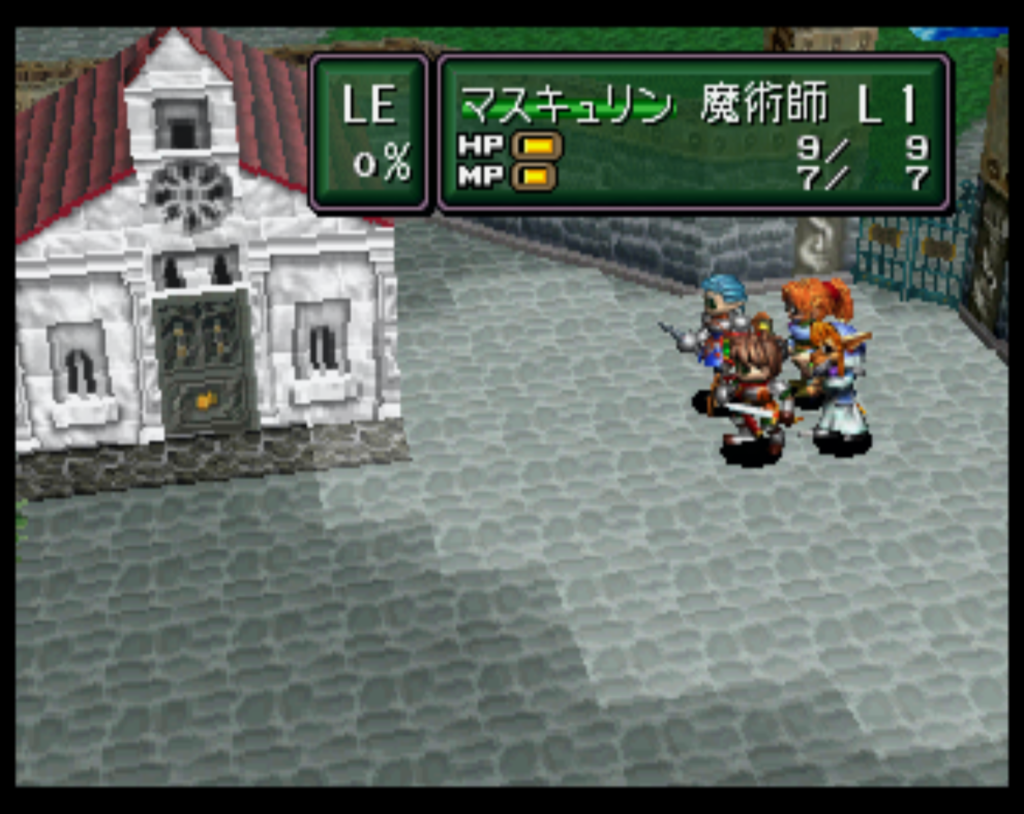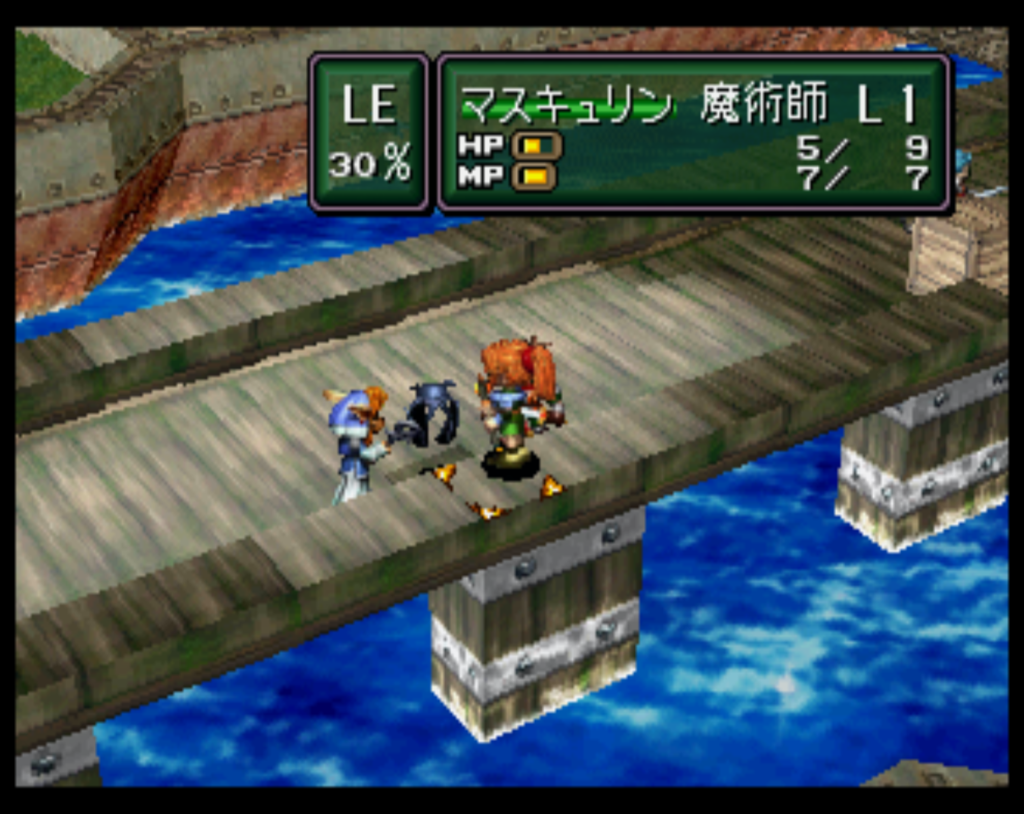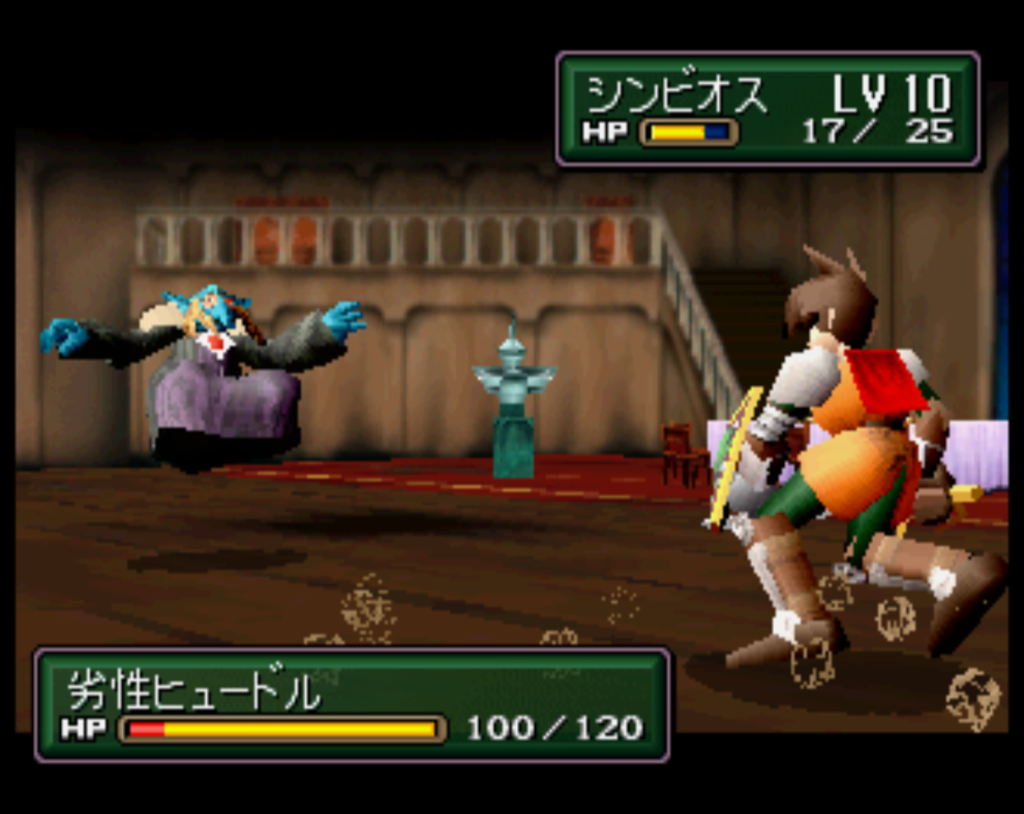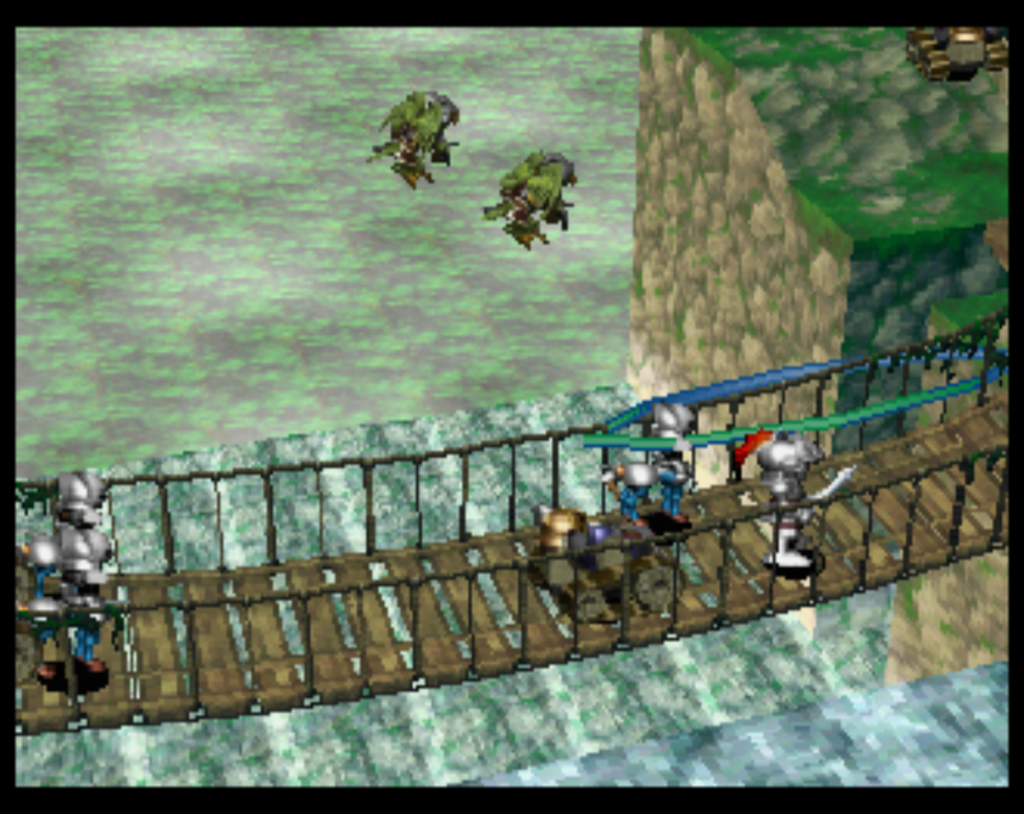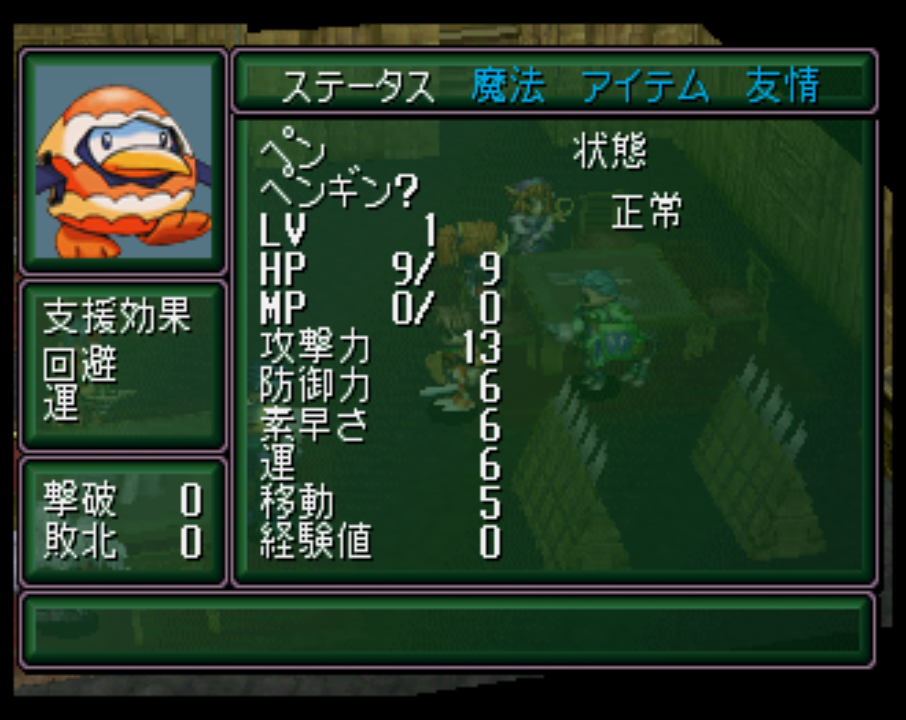Super Mario RPG (スーパーマリオアールピージー), released 3/9/1996, developed by Square and Nintendo

This is the best known of the RPGs on my remaining list, partly because it came out in English — if you look at the list of Super Famicom RPGs, by the end of 1994 they had basically stopped localizing RPGs for the system. From 1995 to the end of the system there were only four RPGs localized: Lufia 2, Chrono Trigger, Terranigma (only in Europe), and Super Mario RPG. This is out of nearly 100 RPGs released for the system in Japan.
Also by sheer coincidence, Nintendo just announced a remake this week for the Switch.
The idea behind this game was apparently to create an RPG that would be popular in the US as well, since JRPGs were generally regarded as a dead genre in the US that nobody cared about. This changed (or at least began to change) with Pokemon and Final Fantasy VII, but the idea that a Japanese publisher would care about Western reception of their JRPG was unusual at the time. Of course the game was popular and did well enough that it spawned a whole series of Mario based RPGs (Paper Mario and Mario&Luigi RPG), with the newest Paper Mario game released in 2020.
My younger brother actually owned this game when it came out, but for some reason I had basically abandoned console RPGs and was focused entirely on computer RPGs like Might and Magic, the AD&D Gold Box series, and such. It wasn’t until around 2003 that I got a PS2 and got back into JRPGs. So I didn’t play this game at all until now.
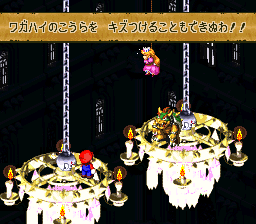
The graphics are a 3/4 isometric view. The game begins with Mario rescuing the princess from Bowser (“Koopa” in Japanese). The princess has always been called Peach in Japanese but her name was still Princess Toadstool in English at this point — SM64, released later in 1996, was when her name officially became Peach in the English version as well.
After this initial homage to the series, the actual storyline starts when a huge sword comes down into Bowser’s castle.
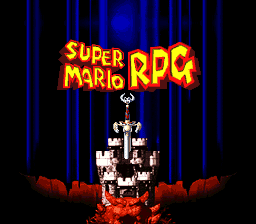
Mario is ejected from the castle and can’t find Peach. He lands near Toad, who goes off to inform the Mushroom Palace of what happened to Peach, and Mario follows.
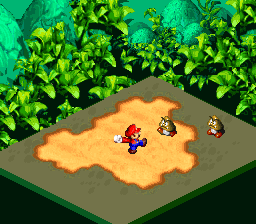
The battles in this game are all symbol encounters, not random. They are essentially standard RPG fare except that you can try to just frame button pushes on attacks and defense for more damage, and the special moves often have things you have to do (like rapidly press the button, or hold it down, etc.) Mario’s Jump move has a special thing where each 2 uses of it increases its power by one, so if you keep using the Jump throughout the game it can be quite powerful even at the end.
Special moves consume FP (Flower Points), which are shared among everyone. You can find items and blocks that will increase your max FP, and FP restore items are pretty cheap.
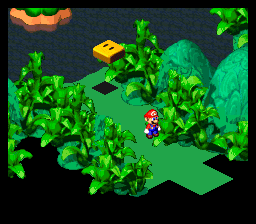
The maps have a lot of platforms, moving things, and such in them — for me this was the weakest part of the game. The isometric view often makes it hard to do the jumps, and I just didn’t think it was well suited to the game. But I suppose it did distinguish it from a normal RPG and fit in better with the Mario theme. There are also a number of hidden blocks (as in classic mario games) but I didn’t find most of them.

Mario soon learns that the sword in the castle is from Kajio, the bad guy who is mass producing a bunch of robots and other machines. Kajio has broken the Star Road into seven stars, and without the Star Road, people’s wishes cannot be fulfilled. So the goal of the whole game is to recover all seven stars and rebuild the star road. There are a number of people that join you as companions:
- Mallow, a marshmallow-like thing that was raised by frogs
- Geno, one of the star road beings (fairies?) who inhabits a children’s doll
- Princess Peach
- Bowser (who wants his castle back!)
You can only use 3 at a time. My usual team was Mario, Peach, and then one of the other three depending on what I felt like at the time. Peach has strong healing moves that are very helpful. Each person has three equip slots — weapon, armor, and accessory. Money are the classic Mario coins, of course.
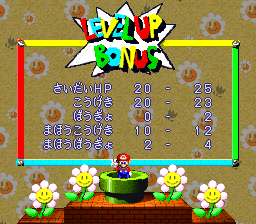
When you level up, you gain stats and then can pick to gain additional stats in either physical, magic, or HP. Each level gives better bonuses for one of them, so check all the options before choosing.
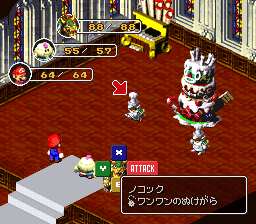
The plot is pretty weird and has a lot of gags more than anything serious. But some of the parts are pretty funny.

There are a large number of minigames; some of them are entirely optional, and others are required although typically you don’t have to do especially well at them to move on in the game.

I was enjoying the game reasonably well until the last two dungeons. I felt that here the isometric jumping stuff got way too annoying (I used save states for the part above, which only gives you 10 falls to clear a whole bunch of rooms in a row) and I was glad to finally finish the game.
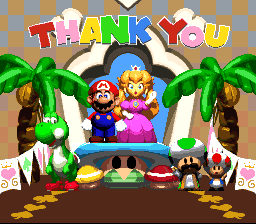
While this game was overall enjoying I think it does show its age, and I definitely did not like the last two dungeons (which is a shame because it finishes the game with a bad impression). I’m hoping that the Switch remake will touch this up a bit. But it is nice to see developers at least trying something new. Too often these mixes of IPs generate weird or bad games, but Nintendo was able to pair with Square rather than some random people making it, and I think that ensured some level of quality.
Finally, the music is quite good as well. I was already familiar with “beware the forest mushrooms” and the boss theme but overall the music is a strong part of the game.
I imagine many retro players who do SNES games have already played this, but if you haven’t (or if you have), give the remake a try when it comes out!


